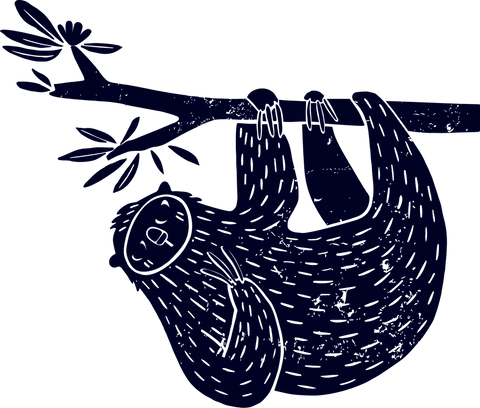Clothes made of paper? At first glance, that doesn't just sound unusual. It is also unusual. However, clothing made of paper has been around for more than a thousand years, as far as the stories about it are true. Japan is considered to be the country of origin.
Origins and history of paper clothing

A legend mentions that in 988 a Japanese monk provisionally made himself a shirt of paper - Japanese kamiko - from individual pages of sacred scriptures of Buddha.
The idea was born out of necessity, to be able to face some visitors in clean clothes. Subsequently, other monks emulated their brother in faith and also wore paper shirts. Later, the custom spread to other strata of society.
It was mainly farmers who made paper clothing for economic reasons. Materials such as cotton, which is common today, were not available to them. Silk was not only an unaffordable luxury good for the peasants, but also not allowed for this population group.
It was different with paper, because the farmers could produce it themselves. They used it for windows and walls, for bags, umbrellas and lanterns. So why not for clothing as well? For the material called "Washi" they used the fibers of the so-called paper mulberry bush, which resulted in a very stable paper. In addition, it was impregnated and deliberately crumpled to make it more supple for wearing on the body.
A "kamiko" of that time protected quite well against heat, cold and even wetness. Nevertheless, it was not a very durable garment. After it was worn a few times, it ended up in the trash, because it could not be washed and cleaned.
Whether this legend is true or not, whether the inventor was really a monk, can no longer be said with certainty. What is certain, however, is that Buddhist monks in Japan made wearing paper robes a tradition, and later wealthier citizens also discovered the kamiko for themselves. However, they had money enough to afford white paper, while the poor peasantry was dressed in yellowish-brown.
|
Clothes made of paper - like many other things - were born out of necessity, as the legend of the Japanese monk and the history of farmers in Japan shows. |
Shifu - the successor of kamiko

Generations later, probably from the 16th century, clothing made of shifu emerged in Japan. These are sheets of paper from books that were no longer in use, which were cut into endless strips and twisted or woven into threads to make them even more stable. The pioneers here were also the rural population, because higher-quality textiles were scarce or unaffordable. The farmers perfected the technique to such an extent that they could even process the paper with spinning wheels.
On the subject of "Shifu" there is also a legend. Supposedly, in the early years of the 16th century, a spy had cut up one or more secret messages and woven them into his clothing. In this way, he could safely smuggle the messages through enemy territory and deliver them to the intended recipient.
Over time, the technique of shifu production was refined to such an extent that the paper garment visually looked like a noble cloth robe. In some cases, shifu was also combined with other materials. Even the samurai, who were highly respected in Japan, had their costumes tailored from it, and later nobles did so as well. Shifu is much more supple and durable than kamiko.
Then, at the beginning of the 20th century, the first cotton imports came to Japan, so the long tradition of kamiko and shifu making slowly took its leave. In 1955, the two types of paper clothing were designated as Japanese cultural heritage. This designation makes it possible to receive government funding to preserve these techniques.
Paper clothing in Europe and North America
Such a long tradition of clothing production from paper does not exist in Europe and North America. Until the end of the 19th century fashion from the material was unknown. On the contrary, it was made from old clothes, rags and rags, and paper. Later, paper came on the market at best as a cheap substitute product for a few items of clothing. These include, for example:
- Shirt collar
- Cuffs
- Ties
- Foreshirts (a covering of the chest, also called serviteurs).
- Mortuary clothing
Paper yarns and fabrics were used for hats, uniforms, linings and underwear. Other articles apart from clothing were cords for use in agriculture, furniture and upholstery covers, (hand) bags or even doll carriages.

From the beginning, production in Europe and North America was industrial, with the paper being unwound from continuous rolls and processed with spinning and cutting machines.
There is no tradition of craftsmanship here as there is in Japan. The spread of paper clothing was also limited. There was only greater demand during the two world wars and the respective post-war periods. Due to their inelastic and hard properties, the poor cleaning possibilities and the low wearing comfort, garments made of paper were and are highly unpopular.
This was partly due to the fact that there are no suitable plant fibers in the Western world as there are in Asia. The relatively stiff material made from wood fibers or waste paper is used almost exclusively for writing and printing.
Fashion aspects and small boom in the 1960s
In 1966, however, there was a brief but quite violent boom. The cause was an advertising stunt by the U.S. paper manufacturer Scott Paper Company. The company had not previously appeared as a fashion designer, but was known only - or at least - as the inventor of the toilet paper roll. In advertisements, it offered paper dresses that cost only 1.25 U.S. dollars each or were also given away for collected loyalty points.
What was intended as a joke turned into an unexpected success. In a short time, Scott received about half a million orders. Encouraged by this, other manufacturers also got into the business. In 1967, for example, the Mars Manufacturing Company produced 80,000 dresses within a week, which could be purchased for between one and eight dollars.
Numerous renowned fashion magazines dealt extensively and seriously with disposable clothing, and stars such as actress Claudia Cardinale appeared publicly in "paper dress".
The trend did not last long, because wearing paper clothing required great caution, for example, in the rain, during jerky movements, or around people who were smoking.
Like so much that was invented and launched in the U.S., the appearance quickly became acceptable in Europe. However, it remains to be noted that the garments were not only made of paper.
Synthetic fibers such as viscose, polyester and polyamide were added for better durability. The fabrics produced in this way were given the name Vliesett.

Fleece wares gained special importance in the former GDR. Fashionable clothing was in demand, but rare. And if possible, it should come from the West. Fleece warp was cheap, colorful printable and non-iron. In addition, the dresses, coats, shirts, etc. were touted by advertisers as easily alterable and easy to repair with duct tape.
It was even possible to wash the fabric up to five times before it had to be disposed of. However, consumers were not really convinced, neither in the West nor in the East. Here, too, the boom lasted only a short time.
Paper clothing today
In today's everyday life, paper clothing is hardly seen. However, numerous designers and fashion designers use this material for their often very elaborate creations. Well-known names are among others:
- Sandra Baklund (Sweden)
- Christa de Carouge (Switzerland, deceased 2018)
- Sun Lee (South Korea)
- Issey Myake (Japan, deceased 2022).
Students from the international fashion school Esmod from Berlin made a very interesting contribution at CeBIT 2010. A total of 60 students created 180 designs for fashion, 20 of which were realized in the end and presented in a show at the trade fair. The motto of the project was "Paper is here for something better from now on". All the designs were made from old office documents.
Costumes from cardboard
Costumes made of cardboard are especially popular with children, for example, for carnival or even for children's birthday parties. Cardboard boxes that are no longer used can be found in practically every household, so they are free.
What you mainly need is imagination to create animals, monsters or other objects. With scissors and cutters, glue, colored paper and fabric scraps, plastic and metal parts, wonderful creations can be realized. Depending on their age, children can also get active themselves and make their costume wishes completely or partially. This is definitely fun and leads to unique results that you can not buy in a store.

Want to know more about using paper? Then just contact us. |
Advantages and disadvantages of cardboard and paper garments
The biggest advantages of paper clothes and costumes are the low price of the material and ease of processing. On the Internet you can find numerous sites with appropriate instructions. Disadvantages are the low durability and the fact that the clothes can not be washed.
Conclusion
Paper and cardboard is - as seen - not only for printing, writing and hygiene, but is also suitable for many other creations. Fashion made of paper is not particularly durable and certainly not easy to care for, but it is possible to realize fantastic creations that can not be done with other materials so. Cardboard is a popular material for costumes, for example for carnival, because of its stability. It is available for free and can be processed easily and in many ways.
FAQ
-
When and where was the first clothing made of paper?
Legend has it that in 988, a Buddhist monk in Japan made himself a shirt (kamiko) out of paper because his clothes were dirty and he wanted to receive an announced visitor in clean attire. The tradition was maintained in Japan for centuries by monks and especially by peasants who could not obtain or afford other textiles.
-
Are there still paper clothes today?
In Japan, the tradition of making clothes from paper is still cultivated in isolated cases. In North America and Europe, there was a brief boom in the 1960s, but it did not last long. The material is simply too delicate for practical everyday use.
Cover image: stock.adobe.com © Willem505 #545809194
Image: stock.adobe.com © Quiteword #559015109





